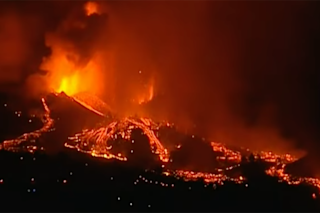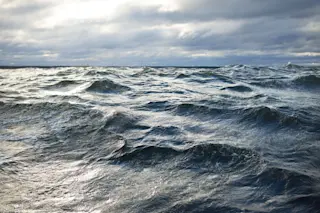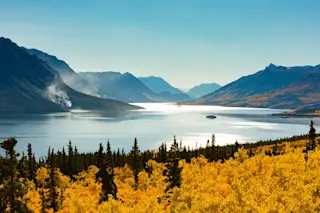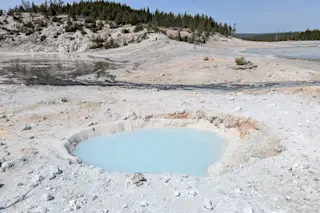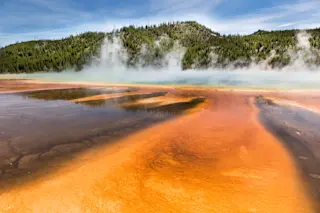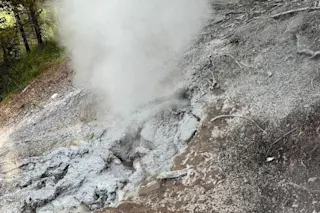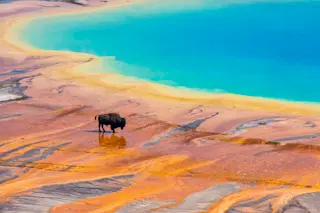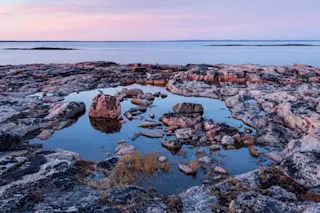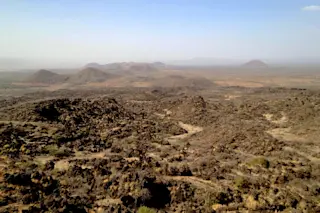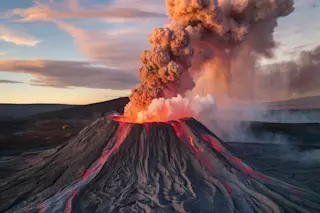For the first time in 50 years, Cumbre Vieja on the island of La Palma has erupted. This shield volcano (think Hawaii) is one of the most active volcanoes in the Canary Islands off the coast of Africa but had been silence since 1971. That all changed Sunday afternoon when the volcano burst back to life after a week of earthquakes that suggest magma rising up into the volcano.
Footage of the eruption shows the typical long lava flows and lava fountains that are expected from a volcano like Cumbre Vieja. The basaltic lava is less likely to cause an explosive eruption, so danger to lives is limited. However, the opening moments of the eruption captured by a news team show a dark cloud of ash (again, not uncommon in the opening moments of these style eruptions). It quickly became an impressive lava fountain that fed lava flows.
Webcam video ...


